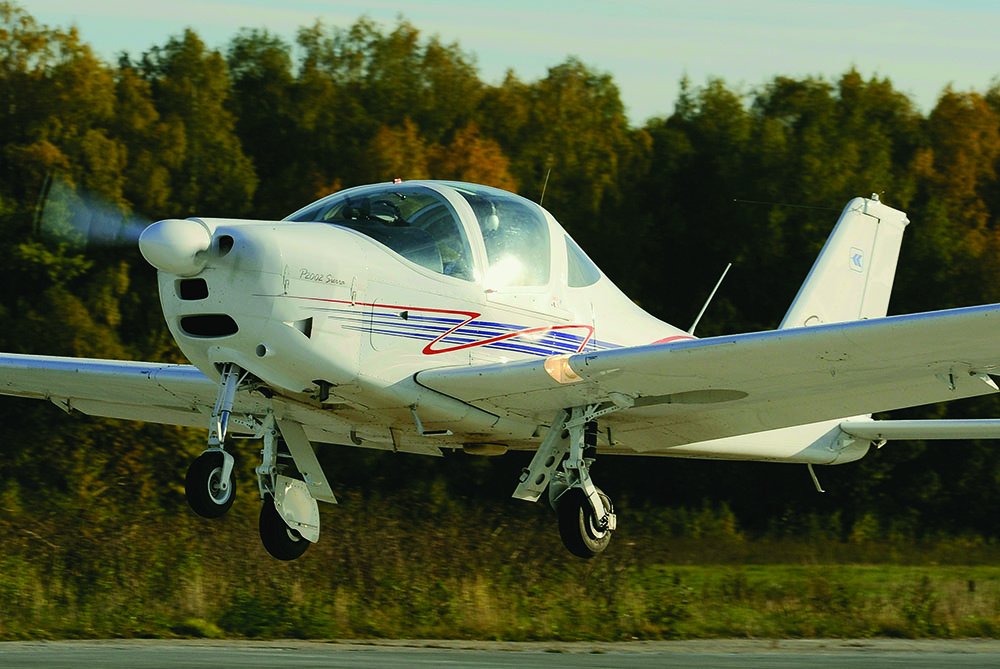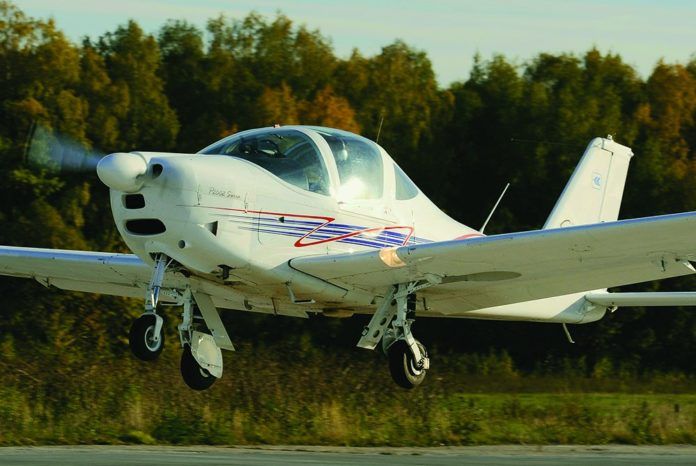There you are, on short final to a nearby airport’s runway, hoping to get to the fly-in breakfast before the sausages get too old. You’ve made your position reports on the CTAF throughout the pattern, the landing checklist is complete, the airplane is configured for landing and you’ve nailed the airspeed. All you’re waiting for as you glide down to the runway is raising the nose for the flare and the final power reduction. There’s no reason to expect this won’t be one of your better landings. Until that airplane that’s been sitting in the run-up area decides to taxi onto your runway, turn its back to you and begin accelerating for its takeoff roll. It’s time to go around. What will you do?
Too often, panic sets in and—perhaps in haste, perhaps in surprise, perhaps a result of poor technique—the pilot in your situation forgets something and the go-around becomes something more. Even if the maneuver doesn’t end with you and your airplane balled up next to the runway, it’s likely your go-around isn’t as smooth or deliberate as you might want. So close to the ground, this is one maneuver you need to get right the first time. But you’ve practiced go-arounds, also known as balked landings, and you know that immediately adding full power may be the wrong reaction.
Arresting Moves
Once the decision to go abort the landing is made, you should go into automatic “go-around mode.” The reason for it can wait, as can the CTAF discussion and explanation to your passengers. You’re relatively low to the ground, at a slow airspeed and flying a draggy airplane. As always, your first concern should be flying maintaining control. You also should be aware that its current configuration isn’t best for climbing away from the runway environment.
Think about it: The landing gear is extended, creating additional drag. You’ve lowered the wing flaps to their full-down, landing position, increasing lift but also adding to the airplane’s total drag. Power is relatively low and you’ve trimmed the airplane to your preferred approach speed, which usually is slower than for best climb rate, VY. Depending on the airplane, immediately adding full power may be the last thing you want to do.
As it happens, the FAA’s Airplane Flying Handbook, FAA-H-8083-3B, recommends adding full power as the next step after making the go-around decision in the first place. After doing it both ways, and studying the ever-interesting ways pilots have managed to bend their airplanes over the years, we conclude the risk of losing control close to the ground by going to full power seems greater than that posed by adding only some intermediate setting. As always, it depends. What we should be thinking about is how best to change the airplane’s trajectory from a gliding, reduced-power descent to a full-power climb.
Aleksander Markin
The first thing to do is arrest the descent. Do that by adding power and coordinating the airplane’s reaction with appropriate pitch inputs. But making an abrupt configuration change—going from approach power to full—at relatively low speeds and close to the ground perhaps isn’t our best choice. Instead, smoothly add power to, perhaps, a low cruise setting and maintain airplane control. Use both hands: one to control the airplane’s attitude and the other its power setting.
Maybe thinking of it as a slow-flight demonstration or a stall recovery may help: Add back enough power to fly straight and level. The nose will want to pitch—usually up—and the sudden application of torque and P-factor likely will demand additional rudder pressure to keep the nose straight. It’s critical that you don’t neglect either control while transitioning from a descent to a climb, but that’s why we practice these maneuvers.
Pitch Trim
A classic situation when going around is the aforementioned need to push—hard—on the pitch control to keep the nose from rising too high. Neglect the pitch control at your peril during a go-around since losing control and stalling so close to the ground almost always guarantees a bad day. This problem arises because pilots tend to use too much trim to reduce control forces when in the landing configuration.
Pitch-trim aerodynamics are beyond this article’s scope, but the punchline is that once we’re trimmed and configured for landing, it’s a rare airplane in which going from reduced to full power fails to generate a pitching moment. The cure is to anticipate the airplane’s reaction and respond accordingly. Once the descent is arrested by adding back at least partial power, position the nose where it should be and maintain that pitch angle. This will be whatever attitude guarantees the descent is arrested and acceleration has begun.
If you’re lucky, your airplane has electric trim controlled by a yoke-mounted thumb switch. That way, you can re-trim and reduce the input needed to hold the nose down with the same hand you’re using to fly the airplane while the other hand is busy with power, flaps and gear. Lacking such a luxury, your other hand also will have to find and manipulate the trim wheel. It can be a busy time, but the combination of adding only partial power and re-trimming can significantly reduce how much effort you need to exert at a critical time. Pilots often use too much trim when landing, anyway, so another way to minimize the need to re-trim during a go-around’s initial stages is to not use so much of it in the first place.
Another thing going on with pitch trim is that almost no matter where it was set before beginning the go-around and no matter how you re-trim when adding power, you’ll likely need to use it again by the time you’ve stowed the gear and flaps, and are climbing away from the runway. To minimize the additional workload re-trimming demands, just don’t use so much of it in the first place.
Definitely don’t do what some pilots do: using some additional nose-up trim to help in the flare. If you over-trim the airplane to a nose-up configuration, and must push on the pitch control to maintain the desired speed on final, you’re doing it wrong.
Phase II
If we consider the things we’ve accomplished so far in this go-around as belonging to the maneuver’s first phase, what’s next? We’ve brought up the power and arrested the descent, started the gear retraction cycle and milked off at least one notch of flaps. We’re maintaining control, of course, but also establishing a climb and verifying the airplane’s configuration. What else?
Maintaining control remains Numero Uno. A close second is remaining committed to the go-around. Unless you’re flogging something that can land on a dime, the situation demanding a go-around has been resolved and you have thousands of feet of runway ahead of you, finish what you started. When you’re accelerating away from the runway is no time to suddenly change your mind, pull off the power and try to land anyway. My rule of thumb is always to continue the go-around, get some altitude, then make a decision on what to do. It could be another circuit of the pattern, with the additional knowledge gain up to the go-around, or a divert to another runway.
Regardless make sure we’ve configured the airplane for best performance: smoothly bring power to full and use coordinated control inputs to compensate for the remaining pitch changes, increased speed and greater climb rate. If there’s still some wing flap extended, ensure you have enough airspeed, then get them started up. If the gear isn’t already up and the airplane is climbing well, plus you’re doing another circuit to land at this airport, leave it down. If not, retract it. Re-trim for the desired climb airspeed, open the cowl flaps, if any, and ensure the airplane is otherwise configured for the desired climb performance.
Smooth Moves
It doesn’t matter why we had to go around; maybe it was ATC, maybe there’s an airplane on the runway, maybe we’re at the wrong airport. Once we make the decision to abort the landing attempt, there’s no backing down. I’m convinced a lot of go-around accidents result from abrupt configuration changes and the airplane’s unexpected reaction so close to the ground. Fly the airplane smoothly and avoid making abrupt changes, and your go-arounds will be more successful.
Jeb Burnside is this magazine’s Editor-In-Chief. He’s a 3100-hour instrument-rated ASEL/ASES/AMEL commercial pilot who’s gone around a few times.




